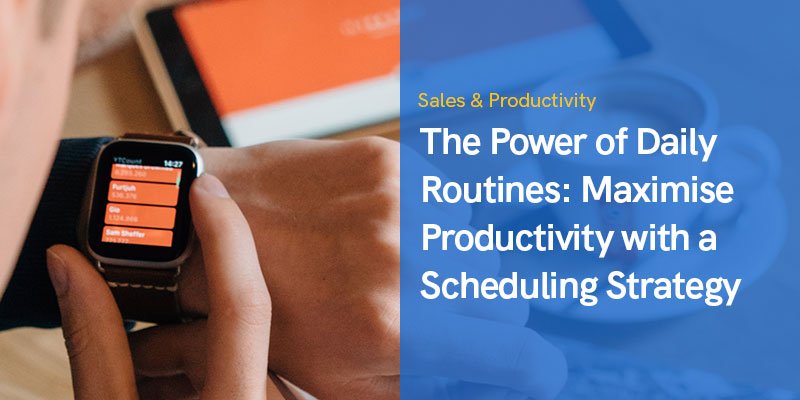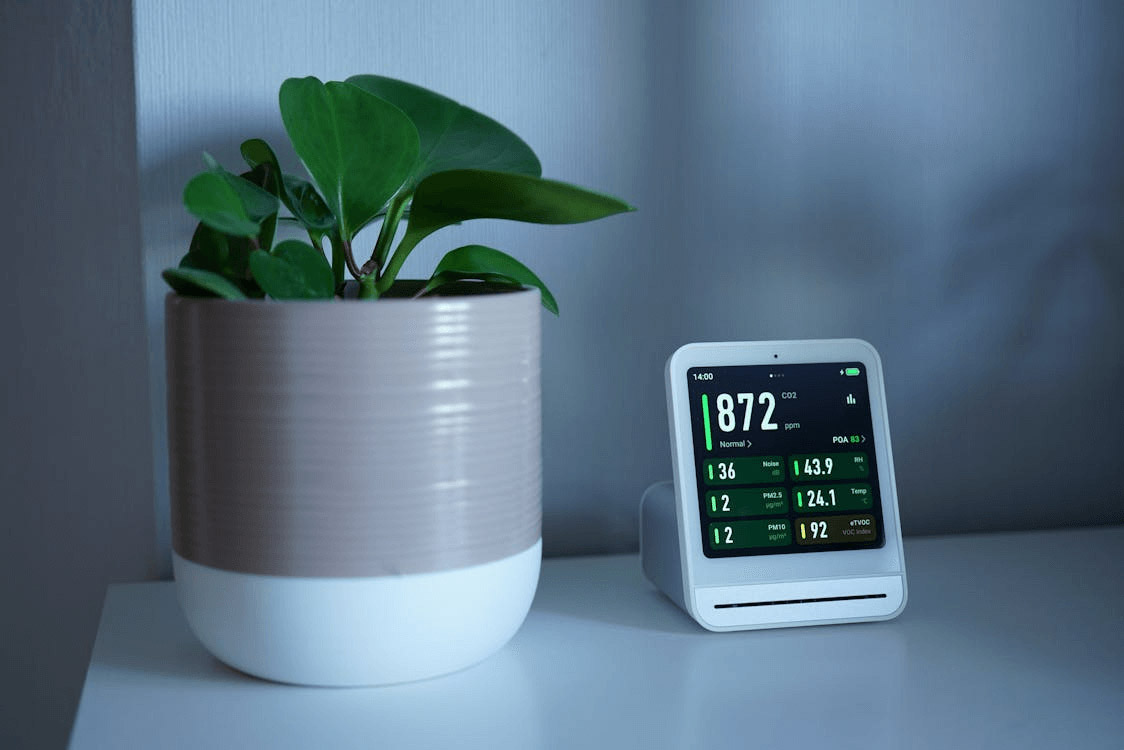
The Power of Daily Routines: Maximize Productivity with Smart Home Technology & Scheduling Strategy In 2025
A daily routine can be a powerful tool to maximize productivity and achieving success.
Modern homes are becoming smarter by the day, and the technology available today can genuinely change how we live.
Everyone can make their home more efficient with modern technology, regardless of their situation. A man searching for Ukrainian brides over 50 might use video calling systems and smart home features to make it easier to start a new family.
Busy professionals automate routine chores with robot vacuums and smart appliances.
Which solutions could be helpful for you? That’s what we’ll discuss in this article.
Creating a structured schedule allows you to stay organised, prioritise tasks, and manage your time effectively for the workday.
Whether you're a student, an entrepreneur, or just looking to improve your work-life balance, a well-planned daily schedule can help you reach your goals.
While Remote work has become increasingly popular in recent years, with many employees and businesses embracing the flexibility and convenience that it offers, it also presents a number of unique challenges.
You may experience feelings of isolation, lack of clear communication, difficulties with time management, and struggles to separate work and home life.
As a remote worker, I have spent plenty of time struggling to stay productive, feeling overwhelmed and having trouble setting boundaries for work and life.
My current company Tixel has helped me develop better habits by creating a schedule and developing strong boundaries.
I have used expert tips from colleagues and done some personal trial and error to create a routine that works for me.
Voice Assistants To Maximize Producitvity: Your Home's New Command Center
Smart speakers have moved far beyond playing music on request. Amazon Echo, Google Nest, and Apple HomePod devices can control your entire home ecosystem through simple voice commands.
You can dim lights, adjust the temperature, start your coffee maker, and even lock doors without moving from your couch.
The real power comes when you create routines. Say “good morning,” and your assistant can turn on lights, start your coffee, read the weather forecast, and begin your favorite news podcast automatically.
Setting up voice control takes minimal technical knowledge. Most devices connect to your Wi-Fi network within minutes, and you can add compatible smart devices gradually as your budget allows.
Create Ambiance and Increase Security with Lighting Systems
Using your phone to control light bulbs is just the beginning of what smart lighting can do.
Modern systems can simulate natural sunlight patterns, automatically adjust brightness based on time of day, and even change colors to match your mood or activities.
Philips Hue, LIFX, and Nanoleaf systems offer different approaches to smart lighting. Some focus on color-changing capabilities for entertainment, while others prioritize natural white light that supports healthy sleep cycles.
Lights with motion sensors can be programmed to turn on when you enter a room and off when you leave, which helps to save electricity.
Security benefits are substantial, too. Smart lights can simulate occupancy while you're away, turning on and off in realistic patterns that deter burglars.
Some systems integrate with security cameras and doorbell cameras to flood areas with light when motion is detected.
Robot Vacuums to Handle the Daily Grind
Robot vacuums have improved dramatically from their early days of randomly bumping into furniture. Current models map your home, clean in efficient patterns, and return to charging stations automatically.
The Roomba Max 705 Vac, Shark PowerDetect, and Roborock S8 series represent the current state of the art.
These devices can clean specific rooms on command, avoid obstacles like pet bowls and charging cables, and even empty their own dustbins. Some models mop floors as well as vacuum carpets.
Scheduling features let you run cleaning cycles while you're at work or asleep. Many owners report that daily automated cleaning keeps their homes consistently cleaner than weekly manual vacuuming ever did.
Pet owners particularly benefit from models designed to handle fur and avoid accidents. Advanced sensors detect different types of messes and adjust cleaning methods accordingly.
Cut Energy Bills and Boost Comfort with Smart Thermostats
Traditional thermostats are basically on-off switches, but smart versions learn your habits and adjust automatically. These systems track when you're home, asleep, or away, then adjust temperature accordingly.
They also provide detailed energy reports showing exactly where your money goes each month. Some models include room sensors to balance temperature throughout your home, eliminating hot and cold spots that plague many houses.
Most units install in under an hour using existing wiring. Just from energy savings, the upfront investment is usually recouped in around two years.
Peace of Mind with Smart Security Systems
Home security technology has become more accessible and powerful. Ring, Arlo, and SimpliSafe offer complete systems that you can install yourself without monthly monitoring fees, though professional monitoring remains available as an option. The most popular devices include:
- Modern security cameras with crystal-clear video, night vision, and two-way audio communication
- Smart doorbells that let you see and speak with visitors even when you're not home
- Motion sensors that send instant alerts to your phone and trigger other smart devices like lights or sirens.
The integration possibilities are extensive. Your security system can automatically lock doors when you arm it, turn on lights when motion is detected, and even start recording on multiple cameras when one sensor is triggered.
Save Time and Reduce Waste with Smart Kitchen Appliances
Kitchen technology focuses on meal planning, cooking precision, and food safety.
- Smart refrigerators track expiration dates and suggest recipes based on available ingredients.
- Connected ovens can be preheated remotely and programmed with precise cooking instructions for specific dishes.
- Instant Pot smart pressure cookers, Anova sous vide devices, and similar appliances take the guesswork out of cooking. You can monitor temperatures remotely and receive notifications when food is ready.
- Smart coffee makers can be programmed remotely and adjusted for different brewing preferences. Wake up to perfectly timed, perfectly brewed coffee every morning.
Integration: How to Make Everything Work Together
The real magic happens when different smart home systems communicate with each other. Platforms like SmartThings, Hubitat, and Home Assistant can connect devices from different manufacturers into unified systems.
For example, your morning routine might start when your smart alarm clock detects you're waking up.
This could trigger your coffee maker to start brewing, slowly brighten bedroom lights, adjust the thermostat, and begin playing your favorite morning playlist.
When you leave for work, a single “goodbye” command could lock doors, turn off lights, arm security systems, and adjust the thermostat to away mode.
Creating these automations requires some initial setup time, but the convenience quickly becomes indispensable. Most people start with one or two smart devices and gradually expand their systems as they see benefits.
How to Get Started Without Breaking the Bank
Smart home technology works best when implemented gradually. Start with one area that addresses your biggest daily frustration, whether that's temperature control, security, or cleaning.
Learn how the system works, then add compatible devices over time.
Consider your technical comfort level when choosing systems. Some require more setup and maintenance than others.
Read reviews from actual users rather than just professional reviewers to get realistic expectations about installation and daily use.
Maximise Productivity with a Scheduling Strategy
So, I’ve written a step-by-step guide to help you avoid feelings overwhelm or burnout by creating a daily schedule that works for you:
Determine Your Priorities
The first step in creating a daily routine is determining what's most important to you.
Consider your goals and priorities, both personal and professional, and make a list of the tasks that will help you reach those objectives.
Be realistic about what you can accomplish in a day and prioritize your tasks based on their level of importance.
I really like to work out so prioritising time to get outside or to the gym is essential in my daily routine.
At work, I know that my biggest objective is improving our social ad campaign so I have 30 minutes at the start of each day to review and progress toward our goal.
Set Achievable Goals
Once you have a list of tasks, set achievable goals for each day.
Make sure that your goals are SMART: Specific, Measurable, Achievable, Relevant, and Time-bound.
This will help you focus your attention and stay motivated throughout the day.
If I know I need to create a specific number of ad copy or create an email campaign layout by a certain date it helps me outline what's important and when.
Create a Timetable
Using your priorities and goals, create a timetable that includes time for work, rest, and play.
Make sure to allocate time for self-care activities, such as exercise, meditation, and reading, as these activities are essential for maintaining a healthy work-life balance.
A to-do list is great but it can also get overwhelming.
Take your list and allocate time for tasks, priorities, rest and everything else to keep you on track.
Consider time for regular breaks to avoid burnout and maintain focus.
Sometimes the best way to solve a problem is by taking a break.
Be Flexible
While it's important to stick to your schedule as much as possible, it's also essential to be flexible.
Life is unpredictable, and unexpected events can disrupt even the best-laid plans.
Be prepared to adjust your schedule when necessary, but also make sure to prioritise your most important tasks and get back on track as soon as possible.
Just take a deep breath and take it as it comes.
I’ve found myself quickly getting attached to my lists or timetable but while I was predicting how long it would take, I didn’t know.
I needed to add flexibility and patience when trying to get it all done.
Use Technology to Your Advantage
There are many tools and apps available that can help you manage your daily routine and stay organized.
For example, calendars, task managers, and to-do list apps can help you keep track of your schedule, prioritize tasks, and monitor your progress.
Consider using technology to streamline your daily routine and make the most of your time.
I really love Notion for creating all sorts of documents and general notes and Notion to-do list templates for scheduling.
Evaluate and Adjust
Finally, it's important to evaluate your daily routine regularly and make adjustments as necessary.
Consider what's working well and what's not, and make changes as needed to improve your productivity and efficiency.
Remember, your daily routine should be flexible and adaptable, so don't be afraid to make changes as your needs and goals change over time.
A well-planned schedule is a powerful tool for maximising productivity and achieving success.
By determining your priorities, setting achievable goals, creating a timetable, being flexible, and using technology, you can stay organized, prioritise tasks, and manage your time effectively.
Once you have created a schedule that works for you try to keep consistency.
By sticking to a consistent plan, you can create a structure that helps you prioritise tasks, manage your time, and stay focused.
When you consistently follow your routine, it becomes easier to establish positive habits and make the most of your time.
Additionally, having a consistent routine can help improve your work-life balance by allowing you to better manage your time and allocate time for rest, self-care, and leisure activities.
The things my schedule has to have are a workout at the same time every day and 10 minutes at the end of each day to create my timetable for the next workday.
These are the things that must stay consistent for me to be successful.
But I didn’t find these non-negotiable overnight, by planning, having support from my company Tixel and consistency I found what works.
If you stick to your plan for a week and find certain things aren’t working for you take the opportunity to tweak your schedule.
So why not start today and take the first step towards a more productive, fulfilling life?




